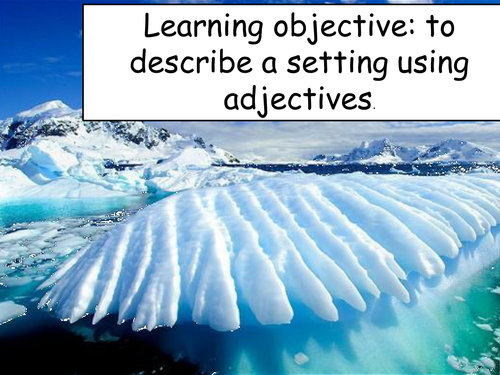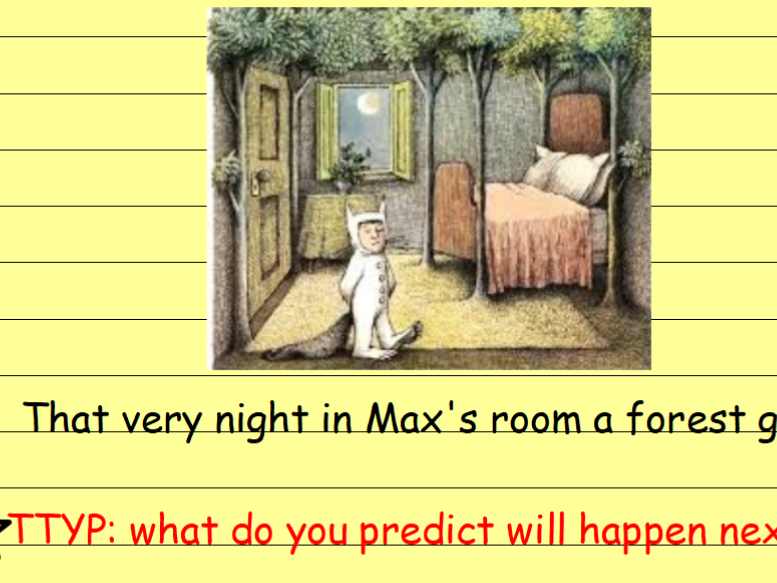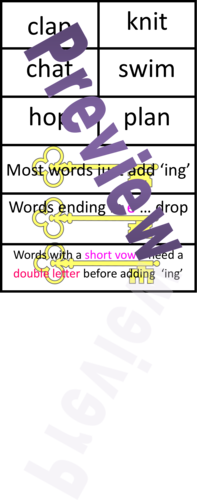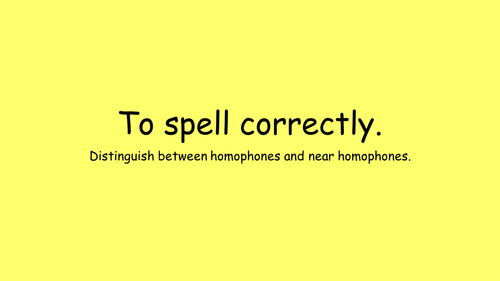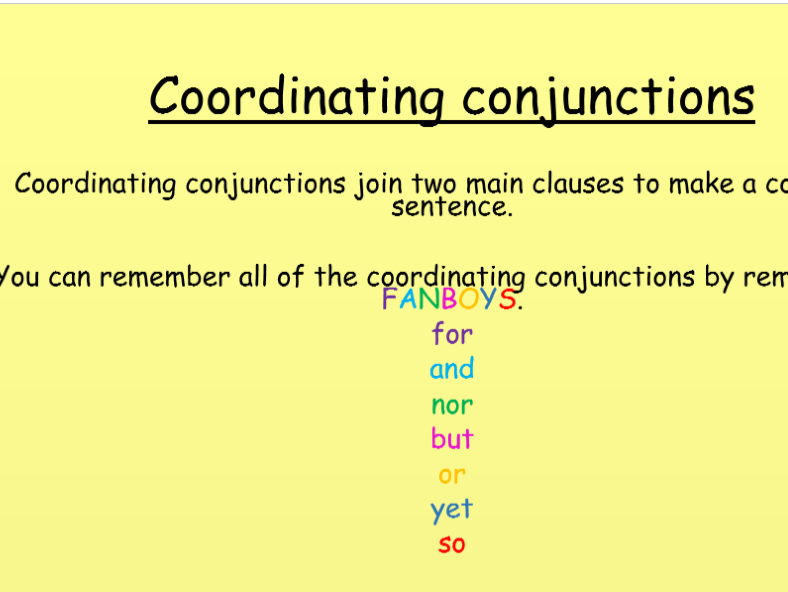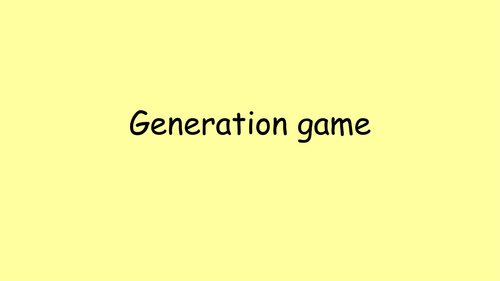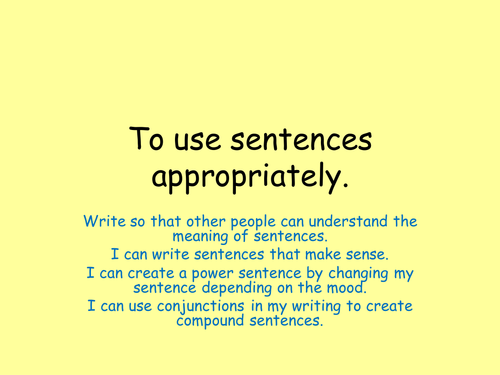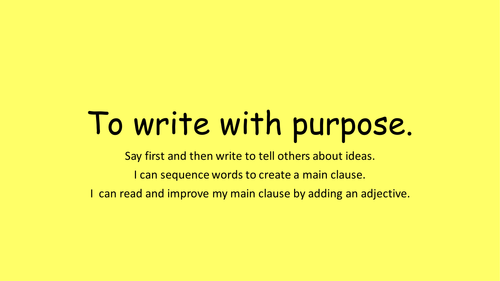
71Uploads
53k+Views
16k+Downloads
English

Using adjectives to describe a setting Year 1
A resource used when teaching a year 1 class about adjectives. Contains a powerpoint with two pictures of an icy setting to describe, a sound clip to be played when the children are thinking about what they may hear in this setting, a thermometer picture to use as a prompt when thinking about how cold it may be there. I used the resource alongside fake snow and fans in boxes. There are senses spinners for lower ability children as a prompt to get them thinking about using the 5 senses to describe the setting. There are also a range of snowflakes. Blank snowflakes for children to write their own adjectives on to share with the class and others with a range of different adjectives on for LA children to decide which ones would be well chosen and which wouldn't. They are then to match the well chosen adjectives to the picture.

Whole class reading where the wild things are year 1
A week long flipchart and resources to be used as a whole class read for year 1 based on the book ‘Where the wild things are’. Covers the domains- inference, sequencing, retrieval, prediction, vocabulary. Only open if you have publisher and activinspire otherwise it wont work. Activities are differentiated.

Traction Man Whole Class Guided Reading Y2 one week
Whole class guided reading flipchart and activities based on the story ‘Traction Man’. Comes with exerts and differentiated activities. Covers a range of reading skills- inference, prediction and retrieval.

Writing compound sentences year 1
A resource made to recap writing compound sentences with year 1. We have previously learnt about coordinating conjunctions and compound sentences but revisited them before learning about complex sentences. The powerpoint and activity is linked to the Julia Donaldson stories as we are currently writing stories based on books by other authors. I have also included an activity where children are to match the two main clauses and turn them into a compound sentence.

Subordinating conjunctions and complex sentences
A presentation and visual resource when teaching year 1 children about the subordinating conjunctions; when, if, that and because. Before introducing the lesson we recapped what we knew already about conjunctions and their purpose. The main activity was for the children to rewrite the sentences on the last slide and underline the subordinating conjunctions. I stuck the complex sentences stickers in the children's books as a reminder of complex sentences and what we had learnt about subordinating conjunctions.

'but, however, on the other hand' teaching resource Year 2.
A range of different resources used to teach the children how to use 'but, however and on the other hand' within a sentence. Contains starter and main teaching activity as well as a lesson plan.

Persuasive writing toolbox
A resource created to be an aid on tables when year 3 children were using persuasive writing. Includes sign to go on the lid of the toolbox and pictures of tools to stick the persuasive techniques on. I bought cheap plastic boxes to create the toolboxes with,

Grammar Suffixes Fly Swatting Game
A resource designed to get children excited about grammar. The idea of the game is for children to investigate what happens when we add a suffix to words. One person is to read the word out to their two team mates who must use a fly swatter to choose the options relating to what they must do before adding the suffix to their words e.g. double the letter before it or remove a letter. The first to guess right gets to keep the word card. If children are struggling they can choose one of the magic clue keys to help them.

Using conjunctions and interesting sentence starts
A presentation and resource created to help year 1 children to edit their work, include conjunctions in their writing and use a range of interesting sentence starts. At the end of the activity I asked children to look at the success criteria they had included in their work and rate whether they deserved 1, 2 or 3 stars, I then asked the children to stand in groups depending on how many they had included, the children were then given another opportunity to fix their work.

GP&S Homophones and near homophones year 1 and 2
A lesson created to teach year 1 and 2 about homophones and near homophones. Can be used as a 20 minute grammar session or whole lesson depending on the depth you want to go into. Pack includes a lesson plan, a powerpoint presentation and the homophones hunt activity.

Coordinating conjunctions KS1
A SP&G lesson on coordinating conjunctions. This was used when teaching my year 1 children what a coordinating conjunction was for the first time. Begins with a revisit of what we know about main clauses and simple sentences and then moves on to looking at coordinating conjunctions. There is an activity at the end of the powerpoint where the children are to choose the best coordinating conjunction to complete the compound sentence.

Year 3 Writing a Persuasive Advert
A range of different resources created to get year 3 children to write persuasively. Resources include starters, main group activities and a powerpoint. Gets children thinking about what a good advert looks like and what techniques we can use in persuasive writing. The overall aim of the unit of work was to be able to sell products to ‘dragons den’. The children were asked to design their own tea and to persuade the rest of the class to buy it. This can be linked to DT as the children then can design and make their product.

Connecting adverbs revision mat
A table or wall prompt to remind children about the uses of connecting adverbs. Comes with examples for each type and the connecting adverbs used within a sentence. I laminated this resource and had it on the table for the children to use when writing.

Phonics Generation game /ch/ alternative pronunciation
A resource used in my year 1 phonics lesson when teaching the children about the different pronunciations for the /ch/ grapheme. Children were to use the pictures to work out what each word said, afterwards we identified the different pronunciations that they found.

To spell correctly- using dictionaries year 1
A resource created to teach year 1 to use dictionaries. Children recapped alphabetical order and then carried out the starter activity sorting words into alphabetical order. The treasure hunt words were places around the room for the children to find meanings of and write them in their books. Also comes with a powerpoint presentation.

Year 1 creative writing
A lesson where children were improving sentences to make a powerful sentence by changing the verb and adjective in the sentence depending on the mood of the story. The pack contains a lesson plan, an activity for the children to complete in their books and the powerpoint presentation to accompany it.

Lost and Found Thinker's Keys
A set of 7 of the Thinker's Keys for year 1 and 2 linked to the book 'Lost and Found' which we used as a topic. The thinker's keys are used to promote a higher level of thinking. The children in my class worked in pairs to complete the different keys and absolutely loved doing it!

Non fiction letter writing year 1/2
A lesson on letter writing which based upon our Peter Pan topic. This pack contains a powerpoint presentation and activities.
I first read the letter from Tinkerbell to Peter to the children to see what they noticed about the way that the letter was set out, we then looked at a range of other letters and the children used sugar paper to mind map their thoughts. The powerpoint then highlights the different features of a letter and where they can be found.
Afterwards the children were given another letter from Wendy to her parents and the children were to identify the features we had been looking at. I have included labels for the LA children to place in the correct place on the letter.

Non fiction- Invitations KS1
A resource used when learning how to write invitations in my year 1 class. All resources are linked to our Peter Pan theme. For the first lesson we looked at what needs to be included in an invitation and the children investigated existing party invitations and then wrote notes on what they were going to include in their own. The following day the children used the reminder sheet to help them to turn their notes into a proper invitation. This pack contains a lesson plan and powerpoints for the two days as well as writing frames and help sheets.

Year 1 Teaching Main Clauses
A lesson looking at main clauses with year 1. Children were to look at the words on the board, do they make a main clause? What does a main clause need? For the activity two adult led groups are to make main clauses using the word cards and write them in their books. Challenge- can you add an adjective or two to make your writing more interesting?

